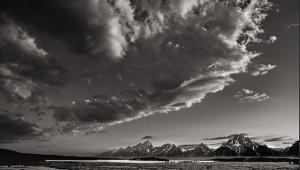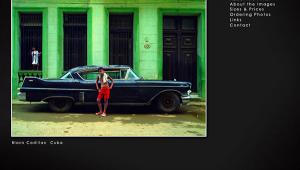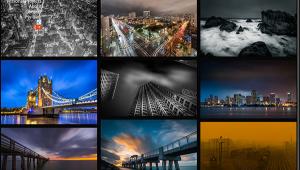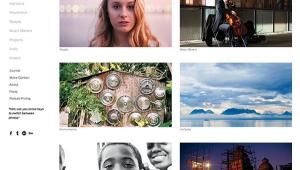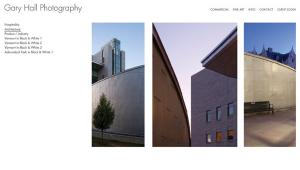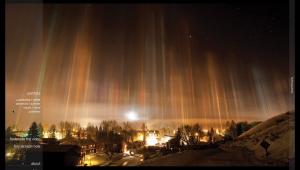New Year, New Web Visions: Revamp Your Site And Use These Online Portfolios As The Inspiration
I’m very excited to kick off the new year with websites from four photographers whose photographs could not be more different from one another, yet each shows the power of photography as the universal language. Anyone who is interested in pursuing fine art photography as either a career or avocation will find that these websites represent a virtual master class and I hope that the photographs will inspire you, as they do me, to make 2015 a year in which we all focus our energies in creating more and better images.
www.jessicajenneyphotography.com
The Pre-Raphaelite Brotherhood (1848) wanted to reform art by replacing what it saw as a mechanistic approach with a return to the detail, intense colors, and complex compositions of Quattrocento (late Middle Ages) Italian art. What does this have to do with Jessica Jenney? I don’t know a better way to describe Jenney’s painfully beautiful photographs that are collected into an understated site hosted on the SmugMug (www.smugmug.com) platform. She’s arranged her main group of images in three collections entitled Landscapes, Flowers, and Whimsical. Inside each are sub-galleries, including seven in Landscapes, based mostly on themes with one related to location. Intimate Landscapes contains the essence of Jenney’s oeuvre, with impeccable compositions wrapped in a Pre-Raphaelite sensibility she says is achieved with “various treatments.” I don’t care about the technical details involved because it all starts with a unique vision that she brings to these photographs and all you have to do is peek inside these collections to know why. In Iconic New York you’ll find romanticized city images that Photo-Secessionists might find hanging in Stieglitz’s 291 gallery while her flower photography combines images with written text to create a serenity you won’t find in typical nature photography. Jenney’s whimsical images won’t make you smile but instead make you think. Here she blurs the line between illustration and photography, showing a virtuosity of craft that, if you’ve enjoyed the ride so far, you will find fascinating. And to me that best describes what Jessica Jenney has created—fascinating.

fmartinmorante.com
Flavio Martin Morante’s cleanly designed site serves as a perfect showcase for his simply complex images. His portfolio is extensive, featuring 12 collections covering geographic areas as diverse as Vietnam and Alabama. In Liquid Dreams, an homage to artist Storm Thorgerson, he takes you on a journey to the surreal with images, such as “Horizons,” that Morante says required no Photoshop. You’ll see the same kinds of colorfully bright and sometimes fanciful images in the Greetings from Alabama collection where the disciplines of editorial, travel, and fine art seamlessly merge in an unstudied formality showing a side of America only someone not born here could find. In Give Me Light he displays his 4x5 black-and-white pinhole work focusing on Wisconsin landscapes that retains that same unique compositional perspective while adding the nuance only monochrome photography can produce. In The Kindness of Strangers Morante interjects people, who have been noticeably absent in other collections, showing photographs of people in Uruguay, Nicaragua, France, and Vietnam made during his “walks around the world.” Interestingly, you don’t always see their faces, yet these photographs are a complex blend of environmental portraiture and photojournalism. Before leaving, peek at MARINAS: Short Tales by the Harbor, under Book, which contains work made around Port Washington’s harbor and marina. Flavio Martin Morante’s spare but lively images open a window to what is at once familiar but expands to help you see the wonder on the world around you.

wanderlustimages.com
Howie Garber is an emergency physician working at small and large hospitals all over the Western US and Alaska but living in Utah. So it’s no wonder he was seduced to photograph the natural splendor that abounds in the state. His two online galleries—Fine Art and Stock—contain six collections of virtuoso landscape photography. I was immediately attracted by the Black and White collection in Fine Art, which is filled with images that contain echoes of Ansel Adams’s work but are uniquely Garber’s own. The word “breathtaking” does not seem sufficient to describe these striking landscape photographs. Next, I bounced on over to Panoramic Images, which Garber shoots with panoramic film cameras. Websites seldom do justice to this format, which should be viewed large and the site does its best to let you see these impressive images. (Tip: Hit Command + or Control +, to enlarge photographs slightly within the browser.) I’ve seen many wildlife photographs but was not prepared with what Garber has captured with the image of polar bears around a gray whale carcass, surrounded by glaucous gulls, that looks like an image straight out of Genesis. In his Wildlife photographs, Garber often features the complexity of nature with sometimes Escher-like images (“Monarch Butterflies, Danaus plexippus, on Branch”) that make you stop and gasp. All of these photographs are available for sale at what appears to be most affordable prices given Howie Garber’s prodigious talent and obvious energy.

eliotdudik.com
Eliot Dudik’s site contains photo essays. Two relate to the American Civil War and include stunning portraits of soldier re-enactors in one with battlefield panoramas contained in the “Broken Land” essay. The final essay, “Road Ends at Water,” looks at US Route 17 that bisects South Carolina’s low country and is fast disappearing under bulldozers. Dudik’s images were shot on large format film because he’s “not encountered anything that can retain the kind of detail possible with a large sheet of film, a view camera, and a drum scanner.” The panoramic landscapes are actually made from two sheets of 8x10 film, exposed simultaneously in a 100-year-old 8x20 Korona field camera. By contrast, his re-enactor portraits were made using a 4x5 view camera. What all of this craftsmanship brings to each essay is different in each case. “Broken Land” benefits from his diptych approach and the registration between the two images is remarkable yet becomes transparent after the first image as you focus on the beautifully constructed content. The “Still Lives” re-enactor portraits are a revelation and seem to have been made during Mathew Brady’s time (albeit in color), rendering not just the crisp detail of their faces but, if I may add, the souls of the subjects. There is something powerful and affecting about these portraits, especially of the younger soldiers, that can’t but help pull an emotional response from the reader. Eliot Dudik’s camera is a time machine bringing you face to face with the past and for that we can all be grateful.

Joe Farace invites Shutterbug readers to visit his personal websites, including www.JoeFarace.com and www.JoeFaraceShootsCars.com, which also includes a blog with tips on photographing automobiles and motorsports.
- Log in or register to post comments
